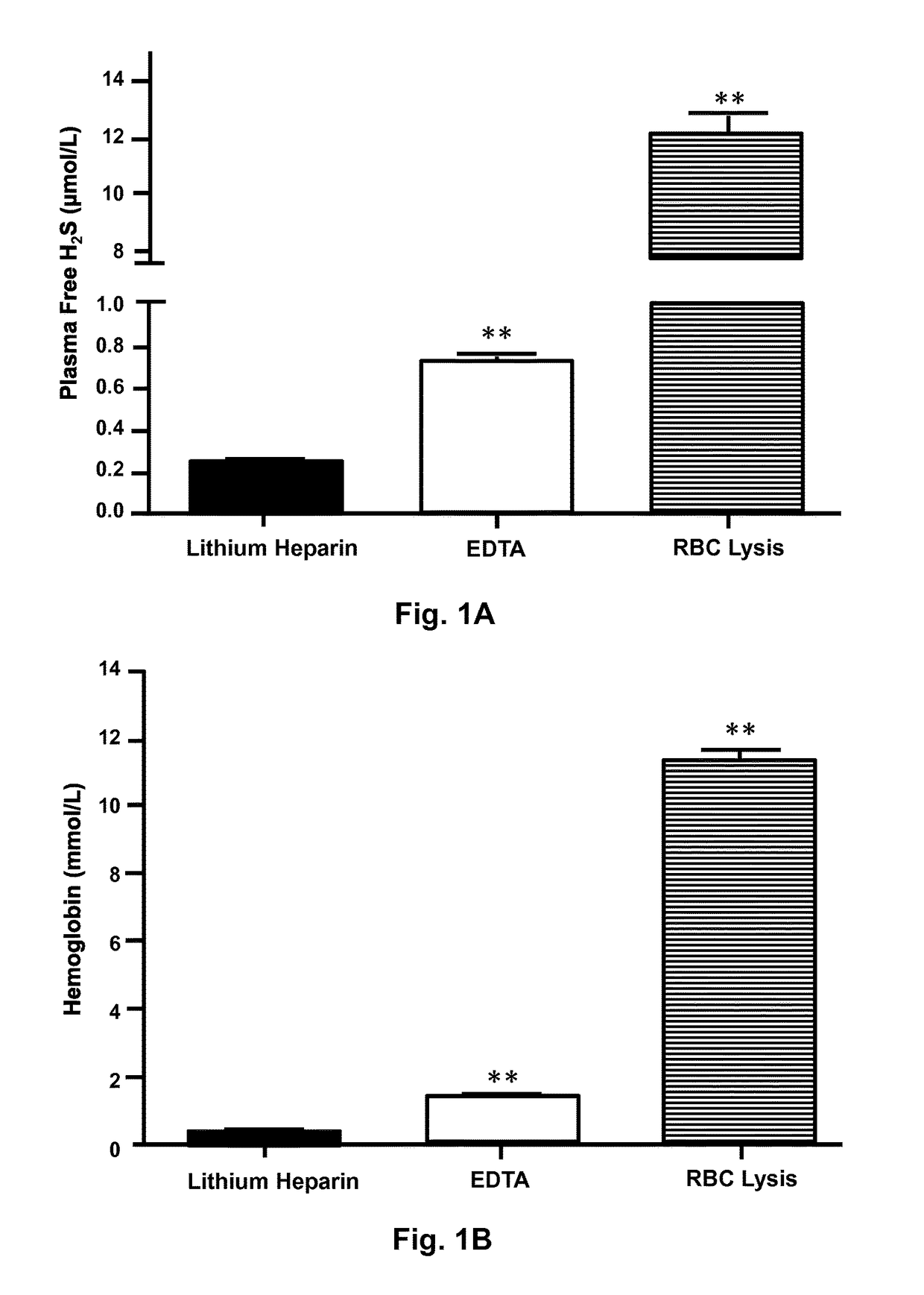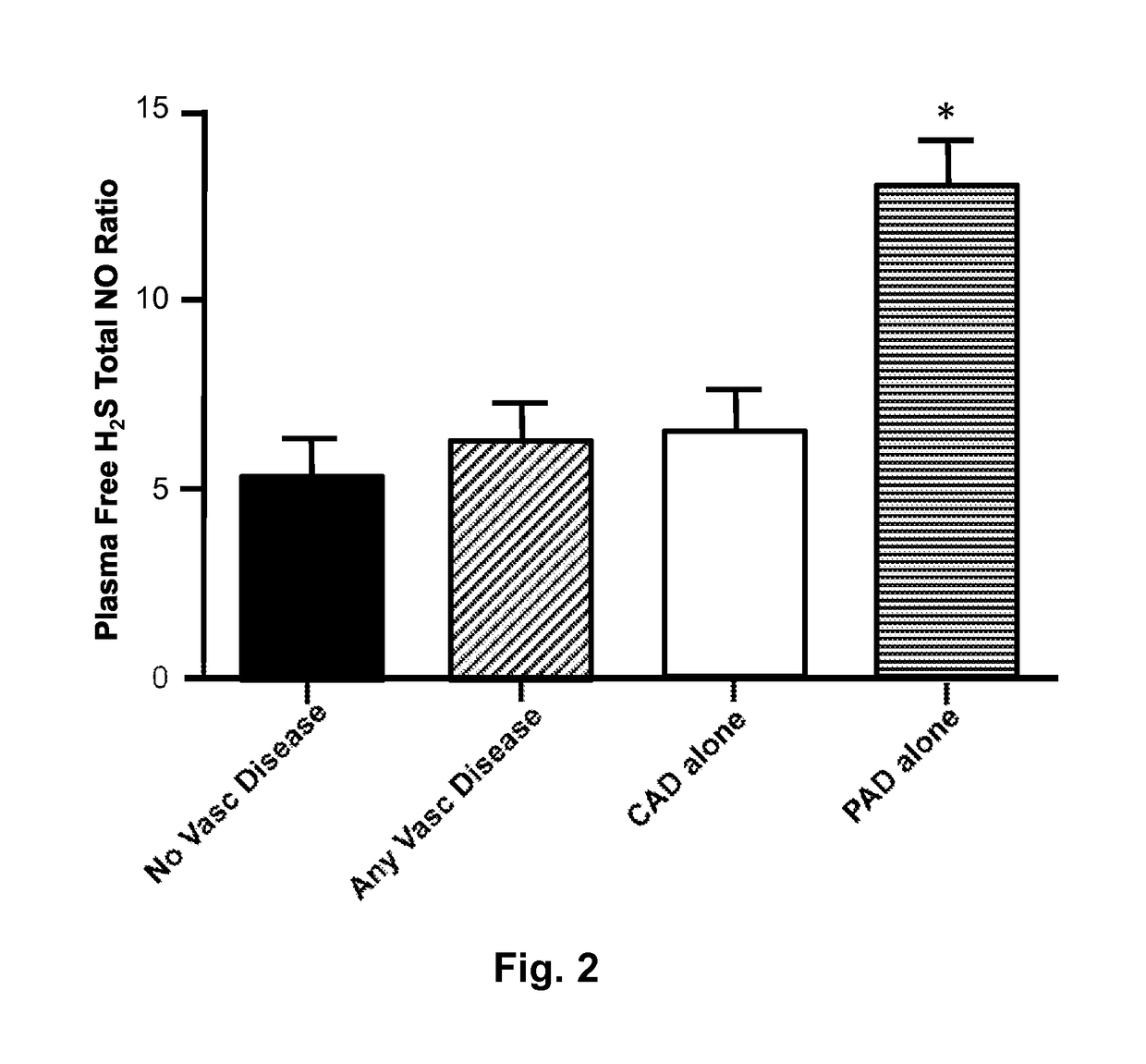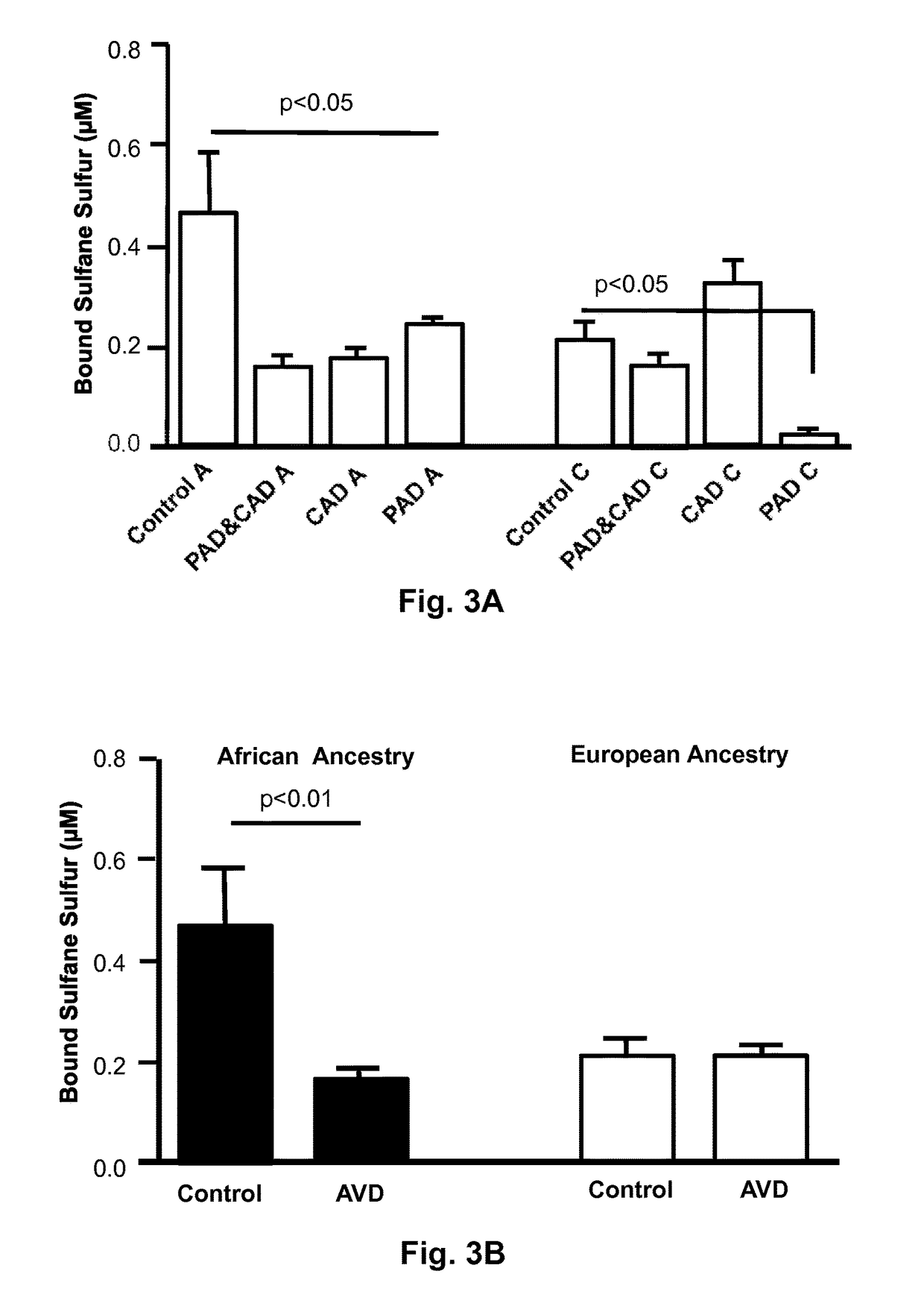Plasma H2S levels as biomarkers for vascular disease
a vascular disease and plasma free technology, applied in the field of vascular disease biomarkers, can solve the problems of lack of specificity, lack of information regarding plasma free hsub>2/sub>, and the most widely used assay, etc., to achieve clinical validation, low risk of harm to patients, and high accuracy
- Summary
- Abstract
- Description
- Claims
- Application Information
AI Technical Summary
Benefits of technology
Problems solved by technology
Method used
Image
Examples
example 1
Study Design
[0027]The clinical study complied with the Declaration of Helsinki and was approved by the Institutional Review Board of the Louisiana State University Health Sciences Center at Shreveport (LSUHSC-S). It was registered at www.clinicaltrials.gov, NCT 01407172.
[0028]Patients over the age of 40 undergoing cardiac catheterization or peripheral angiogram via a major arterial approach at the LSUHSC-S cardiac catheterization laboratory or vascular surgery suite were enrolled in the study. The protocol broadly enrolled patients with suspected cardiovascular disease, which was then either confirmed or ruled out by angiography. Patients presented for angiography for the usual clinically accepted indications, including coronary angiography, unstable angina, non-ST elevation myocardial infarction, and stable angina. Peripheral angiography was performed for claudication and critical limb ischemia. A single physician operator performed the ankle brachial index (ABI) measurement using ...
example 2
Exclusion Criteria
[0029]Seventy-eight patients were excluded from the study for various reasons. Patients were excluded if they were unable to provide informed consent, were enrolled in another clinical trial requiring the use of experimental therapeutic agents, were pregnant / nursing, or for other issues (e.g. cancellation of the procedure). Patients with non-atherosclerotic PAD (e.g. Buerger's disease) were excluded, as were those with an ABI>1.3 (indicative of a non-compressible vessel) unless they had already been diagnosed with PAD. To avoid delays in care, patients presenting with ST elevation myocardial infarction or cardiogenic shock were excluded. Samples were also excluded for quality control failures (e.g. exceeding collection tube incubation time or specimen hemolysis).
example 3
Patient Cohorts and Historical Data
[0030]One-hundred ninety-three patients were studied, including 74 PAD patients and 119 non-PAD patients who were subsequently diagnosed with or without CAD after cardiac catheterization. Initial groups were based on the ABI or known PAD status: (1) patients without PAD as defined by 0.9<ABI<1.3; or (2) patients with PAD as defined by an ABI<0.9, or documented PAD on a peripheral angiogram, or with prior peripheral arterial interventions.
[0031]The two groups were then divided according to the presence or absence of CAD on the basis of their coronary angiogram using currently accepted definitions, i.e. the presence of stenosis greater than 50% in at least one major epicardial coronary artery (diameter >2 mm). In a few cases, coronary angiography could not be performed, and CAD diagnosis was based on medical history or history of prior myocardial infarction.
[0032]Medical records were studied and patient interviews were conducted to assess traditional...
PUM
| Property | Measurement | Unit |
|---|---|---|
| diameter | aaaaa | aaaaa |
| pH | aaaaa | aaaaa |
| pH | aaaaa | aaaaa |
Abstract
Description
Claims
Application Information
 Login to View More
Login to View More - R&D
- Intellectual Property
- Life Sciences
- Materials
- Tech Scout
- Unparalleled Data Quality
- Higher Quality Content
- 60% Fewer Hallucinations
Browse by: Latest US Patents, China's latest patents, Technical Efficacy Thesaurus, Application Domain, Technology Topic, Popular Technical Reports.
© 2025 PatSnap. All rights reserved.Legal|Privacy policy|Modern Slavery Act Transparency Statement|Sitemap|About US| Contact US: help@patsnap.com



